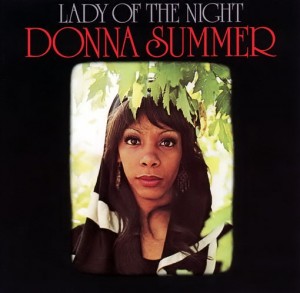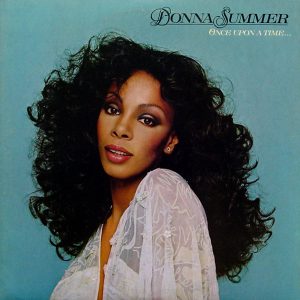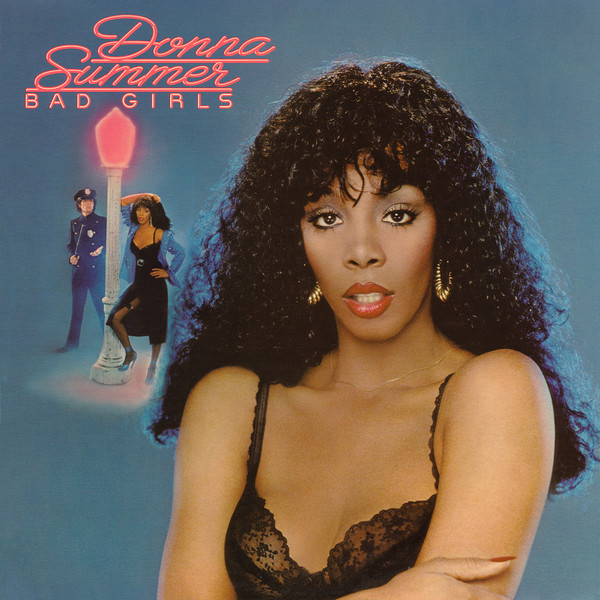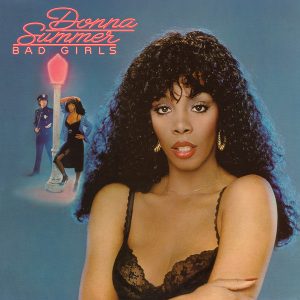
Upon its release in 1975, “Love to Love You Baby” was an instant sensation that put the burgeoning disco format to exquisite use. For some critics though, particularly those of an American persuasion, the song was seen as a novelty. They were wrong.
As for the woman behind the hit, Donna Summer proved to be much more than just an anonymous voice on some polished track of the period. Her journey began in Boston, Massachusetts where her unyielding love for singing would eventually send her across the Atlantic Ocean to Munich, Germany in 1968 for eight years as a young adult.
Once there, Summer became a darling of the German theatre circuit and moonlighted as a session vocalist that cut a few non-LP singles for several labels along the way. The latter vocation led Summer to cross paths with ascendant studio maestros Giorgio Moroder and Pete Bellotte.
Friendship and collaboration between the three ensued and Summer’s inaugural set Lady of Night (1974) was born. Love to Love You Baby emerged in 1975 to provide Summer a path back home to the United States courtesy of Casablanca Records. And so, from 1976 to 1978, Summer not only conquered America with an imaginative parade of silver, gold and platinum singles and albums, she maintained her foothold abroad to cement herself as the preeminent figure of the disco movement internationally.
1979, Moroder and Bellotte were back on deck as Summer’s primary co-pilots, but she had additional counsel this time around too. Bob Conti, Harold Faltermeyer, Keith Forsey and Brooklyn Dreams—all proficient writers and musicians respectively—were a boon to Summer as she looked to set aside the symphonic colors of her last project, Once Upon a Time (1977). But, the one link Summer maintained between both records is the thematic exploration of the modern woman. Only this time instead of using the fairytale of Cinderella as an analogous device to do this, Summer started observing the real-life rhythms of the city around her (Los Angeles) for inspiration.
Tracks
A1 Hot Stuff 5:13
A2 Bad Girls 4:57
A3 Love Will Always Find You 4:01
A4 Walk Away 4:17
B1 Dim All the Lights 4:40
B2 Journey to the Centre of Your Heart 4:37
B3 One Night in a Lifetime 4:13
B4 Can’t Get to Sleep at Night 4:45
C1 On My Honor 3:32
C2 There Will Always Be a You 4:58
C3 All Through the Night 5:54
C4 My Baby Understands 3:56
D1 Our Love 4:54
D2 Lucky 4:37
D3 Sunset People 6:28
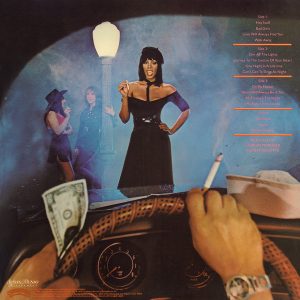
Albumism review by Quentin Harrison
Several narratives stretch across the fifteen tracks of Bad Girls, eight of which Summer either wrote or co-wrote. Whether it is the simmering sex worker story boarding of the title entry or the bittersweet paean to unrequited love on “Lucky”, Summer’s intelligence and sensitivity are boundless. When she did draw back as a writer on the other seven compositions featured, she made sure her peers stayed in line with her vision of a lyric-driven record as “Hot Stuff” and “Sunset People” platform wonderfully.
Summer delivers every composition with precision and heart, her amorphic instrument reveling in its might on uptempo “Journey to the Centre of Your Heart” or downtempo “On My Honor” moments.
Musically, as with much of her canon up to this point, there had been other genres at work underneath or adjacent to the seductive disco element. One such genre—rock & roll—had long since been in Summer’s sights. Having recently been in a cooperative sphere with Brooklyn Dreams on her December 1978 smash “Heaven Knows,” Summer was sonically smitten with their rock-disco-soul vibe that merged with her own shimmering dance music shape on that effort.
Bad Girls strikingly split itself three ways with an aggressive, bottom-heavy rock-funk-disco fusion “Dim All the Lights”), experimental electronics “Our Love” and booming AOR balladry “All Through the Night”. That Summer could command these different sounds over an entire recording demonstrated that she couldn’t be confined to just one space.
It was the mark of a true pop pioneer.
Preceded by the aptly titled four-on-the-floor firestorm “Hot Stuff” in mid-April 1979, Bad Girls arrived later that month. It subsequently stormed the charts to become Summer’s best-selling collection and her second double album (of an eventual three) to top the U.S. Billboard 200. It’s a record set and held by Summer to this day.
In addition to its commercial triumph, its critical scores were near universal and culminated in a groundbreaking achievement with a Grammy nomination—and win—in 1980 for its lead-off single “Hot Stuff” for Best Female Rock Vocal Performance. The newly minted category saw Summer as not only the first woman to win this accolade, but she was the only woman of color to compete in this category that year alongside Carly Simon, Rickie Lee Jones and Bonnie Raitt. She secured nominations again in 1982 and 1983, which put Summer at the head of an elite cache of black frontierswomen such as Joan Armatrading, Melba Moore, Nona Hendryx (of Labelle) and Tina Turner to receive entry into an exclusively white field.
As the 1970s closed, the 1980s opened ahead of her full of possibilities. But 1980 was not without a major flashpoint at its inception. Despite Bad Girls remaining a strong seller, even in the wake of the release of her first singles compilation On the Radio: Greatest Hits Vol. 1 & 2 (1980), the working relationship between Casablanca Records founder Neil Bogart and Summer had broken down.
She departed Casablanca and signed a contract with Geffen Records, a fledgling imprint founded by its industry heavyweight namesake David Geffen. Summer resided there for almost the whole of the 1980s and more overtly built upon the genre-bending foundation she had laid at her antecedent label home.
Looking back, Bad Girls was a departure from disco, but a continuance of the broader pop experimentation that had been occurring in plain sight in Summer’s initiating decade of activity. The long player was a threshold for the greater artistic gains Summer captured moving forward.
Get it here
More Donna Summer in our back pages here
